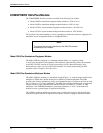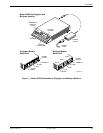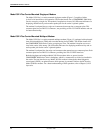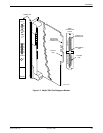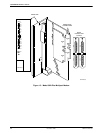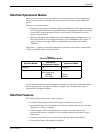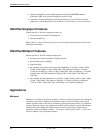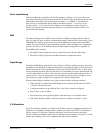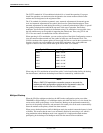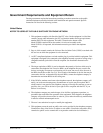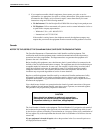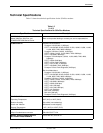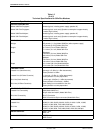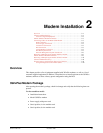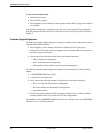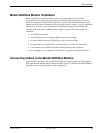
COMSPHERE 392xPlus Modems
1-10 November 1996 3920-A2-GN31-30
The CCITT standard for V.34 modulation includes dial- or leased-line operation. For proper
leased-line operation, one modem must be designated as the answer modem while the other
modem must be designated as the originate modem.
The V
.34 standard also includes asymmetric rates, automatic adjustment of the transmit power
level, and automatic adjustment of the symbol (baud) rate for optimal data throughput. These
automatic adjustments are made during the training, or modem synchronization, phase via special
line-probing techniques that establish the top-most viable rate of operation. Due to these
techniques, true fixed-rate operation of the modems using V
.34 modulation is not possible, since
the line condition may not be capable of supporting the selected rate. Thus, using CT11
1 and
CT112 for rate control of extended data circuits cannot be used.
When operating in V.34 modulation, you can use the top line of the Quick Configuration screen to
view the current modem transmit rate, the symbol or baud rate, and the transmit level. The
392xPlus modems offer separate options for leased and dial lines to override the asymmetric rate
function, since this can cause problems for certain DTE equipment, Also, each symbol rate
supports a subset of data rates, which make up the whole of the V
.34 standard.
Symbol Rate Supported Data Rates
3429 4800 – 33.6K
3200
4800 – 31.2K
3000
4800 – 28.8K
2800
4800 – 31.2K
2743
4800 – 31.2K
2400
2400 – 24.0K
When using the V
.34 modulation on leased lines with a 2-wire leased backup facility
, the backup
line check feature, which tests the backup leased lines for connectivity
, cannot be used.
NOTE
When a 2400 V.34 modulation connection occurs on one end of a
modem pair with configuration options set for Asymmetric rates, the
other modem is 24K due to the 2400 symbol rate it uses.
Multiport Backup
When the 392xPlus multiport modem has the MUX mode configuration option set to either
TDM/MSD or Digital Bridge, it is in Multiport mode, and either dial lines or a 2-wire leased line
can be used to back up the primary 4-wire leased line. Backup can be performed automatically
upon loss of the primary leased line, and automatic dial standby also can be used to automatically
return the modems to the primary leased line when restored.
When you use backup functions while in Multiport mode, the modem’s automode feature is forced
to Disable. This ensures that the mux is not accidentally disabled by answering a call, which is
using modulation where Multiport mode is not supported. It is important that both modems
participating in the backup are in Multiport mode with the same dial-line modulation.



